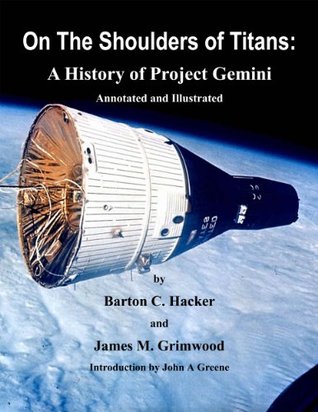More on this book
Kindle Notes & Highlights
Read between
July 27, 2023 - July 31, 2025
astronaut Gus Grissom was heavily involved in the development and design of the Gemini spacecraft. (The other Mercury astronauts dubbed the Gemini spacecraft the "Gusmobile".
Gemini, America's second-generation spacecraft, reeled off ten manned flights in less than twenty months - a flight rate yet to be surpassed in any space program.
Because this combination is hypergolic - fuel and oxidizer burn spontaneously on contact - Titan II needed no ignition system.
Chamberlin's group had, in fact, centered its work on a lunar-lander design, since reentry problems were already well in hand. Stressed as an answer to design constraints rather than a weight-saving expedient and sponsored by men with plenty of practical experience in Mercury, lunar orbit rendezvous in Chamberlin's plan for a Mark II lunar landing mission received its first serious hearing from STG.
The talented engineer can always see new ways to improve his machines, but the successful manager must keep his eyes on costs and schedules, even if that sometimes means settling for something good enough instead of better.
Among the recommendations was a full-scale NASA audit of Rocketdyne's business management practices and Space Engine Division operations. It was a large undertaking, and a report was not ready until April 1965. Its findings revealed a badly managed program. Having "grossly underestimated the magnitude and complexities" of its Gemini subcontract, Rocketdyne had been slow to set up a sound organization. As a result, budgets were poorly controlled "and operations were inefficient," producing "significant cost overruns and delays." Not only had outright overruns very nearly doubled the cost of the
...more
Officially the flight of Gemini 3, unofficially it was the voyage of "Molly Brown." During Project Mercury, each pilot had named his own spacecraft, although Cooper had some trouble selling NASA on Faith 7 for the last spacecraft in the program. Grissom and Young now had the same difficulty with "Molly Brown." Grissom had lost his first ship, Liberty Bell 7, which sank after a faulty circuit blew the hatch before help arrived. "Molly Brown," the "unsinkable" heroine of a Broadway stage hit, seemed to Grissom the logical choice for his second space command. NASA's upper echelons thought the
...more
Gus Grissom and John Young wanted to depressurize the cabin during their training for Gemini III and open the hatch at a simulated altitude of 46,000 meters. Selling this idea to McDonnell was not easy. McDonnell, as Young later remarked, "certainly didn't want to take the chance of bagging a couple of astronauts in the altitude chamber," and NASA was none too happy about "putting guys in vacuums with nothing between them but that little old lady from Worcester, Massachusetts [the seamstress at the David Clark Company], and her glue pot and that suit."
While in drifting flight, Borman read some of Mark Twain's Roughing It, Lovell part of Drums along the Mohawk by Walter D. Edmonds - both selected partly because they had nothing to do with the space program.83
Meanwhile, See had continued his left turn. The aircraft angled toward McDonnell Building 101, where technicians were working on the very spacecraft See and Bassett were scheduled to fly. Apparently recognizing that his sink rate was too high, See cut in his afterburners and attempted a sharp right turn; but it was too late. The aircraft struck the roof of the building and crashed into a courtyard. Both pilots were killed.
Stafford later said, "Frank [Borman] and Jim [Lovell] may have more flight time, but nobody had more pad time in Gemini than I did!" By the time Gemini IX-A lifted off, he had been in the two spacecraft (6 and 9) ready for launch a total of six times.44
After careful study, the planners concluded that an emergency reentry from an elliptical orbit with a perigee of 298 kilometers could be made even if only three out of the four retrorockets fired.
During the flight period, there had been a spacecraft circling Earth about six percent of the time or, theoretically, an hour and a half for each one of the 603 days the operations covered.
The fact that the Russian cosmonauts did not fly at all while American astronauts whirled about Earth at frequent intervals probably prompted the premise that the race was over.
Although the summary conference was given little space by the news media, Gemini's lessons and its people, some in leadership roles, were significant factors in Apollo's recovery.
As it developed the gaze was not wholly outward to the stars. Beginning with Gemini's manned missions,scientists gradually realized that photographs of Earth brought back by the astronauts could serve as a valuable tool to help identify and husband Earth's dwindling resources. Perhaps future historians will see that as Gemini's most lasting contribution.


